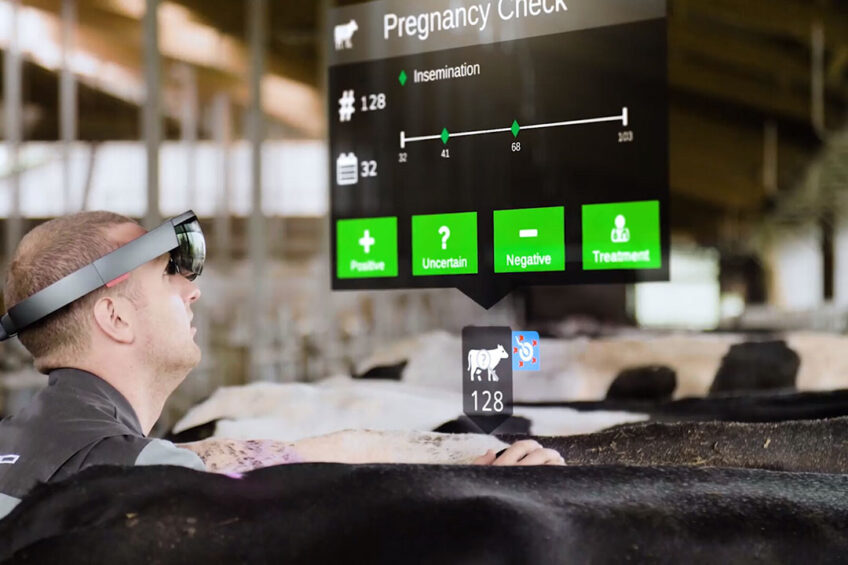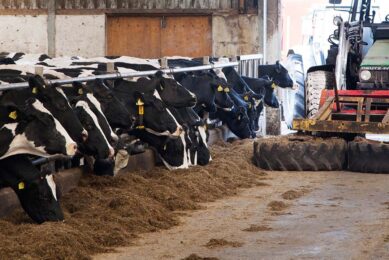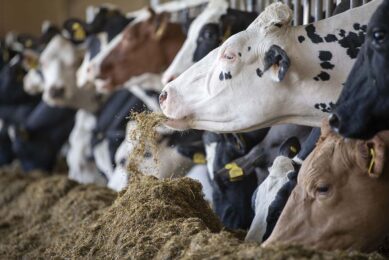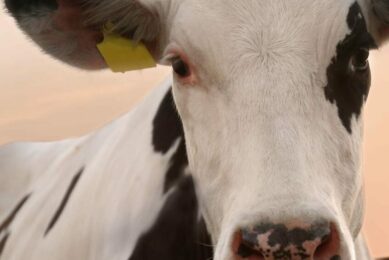Automated herd management systems – what’s on the market?

These systems can intensively monitor transition, detect mastitis up to 4 days before clinical symptoms become visible, and have high-accuracy heat detection, among other benefits. Here’s an overview of how these systems work and their capabilities.
Dairy farmers in many countries can now choose from various automated ‘Farm Management Information Systems’ (FMIS) – ear tag, neck collar, or rumen bolus-based systems that capture and process detailed sensor data and enable farmers to make better decisions relating to individual cows. This impacts on cow health and welfare, farmer efficiency, and farm profitability.
Before we look at the capabilities of some of the FMIS currently on the market, let’s take a broad look at the differing software programs that complete the continuous analysis of the data coming from system sensors – and provide continuous recommendations to the farmer on disease and more.
A team of European researchers recently noted that algorithms used in FMIS already have capabilities such as detection of lameness and disease, and prediction of calving time, but maximised benefits will come from systems capable of ‘machine learning’ (the ability to learn and adapt without following explicit instructions, and to analyse and draw inferences from data patterns). In February, the scientists, based at Wageningen University & Research in the Netherlands and Bahcesehir University in Turkey, published a review of studies on FMIS in the journal Preventive Veterinary Medicine.
Deep learning for efficient dairy farming
CattleEye is on a mission to create the world’s first autonomous livestock monitoring platform. CEO and co-founder Terry Canning tells us more. Find out more…
Team member Dr Ayalew Kassahun of the Information Technology Group at Wageningen University says that some of the types or sub-types of algorithms in the studies reviewed could be of poor quality. “Probably, there are a list of things the industry has to address to overcome the challenges and improve the performance of the algorithms,” says Kassahun. He and his colleagues “can’t suggest an easy fix to the challenges,” because the challenges identified are diverse and no single challenge is very prominent.
Some of the algorithms are ‘regression’ algorithms, which are straightforward, easily explainable and very useful, whereas Artificial Neural Networks (ANN), which consist of artificial (mathematical) neurons, are more complex but provide more flexibility.
Looking to the future, Kassahun explains that the complex nature of ANN is the basis for what are known as ‘deep learning’ machine learning algorithms, which are very promising in terms of their capabilities. However, ANN algorithms were only found in 3 studies. “Deep learning needs more data and with the help of ‘big data’ generated at farms these days, deep learning algorithms can effectively be applied,” he says.
Just as an example, video images from drones and stationary cameras can be used to observe the behaviour of herds that can be fed into deep learning-based algorithms, creating complex models that will help the farmer and help the animals too.”
To get a sense of current capabilities of FMIS now on the market,we contacted some companies, these systems are available in many countries.
Nedap
Using a Nedap CowControl collar system, farmers can monitor eating, rumination, cow position and activity. The company states that “uniquely, health attitudes are based on a combination of various health parameters, instead of looking at one individual parameter. The system compares all behaviour with standards for optimum condition, the previous behaviour of the cow and the behaviour of the group she is in and detects changes or abnormalities. It provides the earliest and most reliable health alerts for cows that need urgent attention…It also enables farmers to intensively monitor transition cows and post-treatment recovery.”
Nedap CowControl has also launched an Augmented Reality application, a first for the dairy industry. This technology brings the farmer’s real world and digital information together, enriching a farmer’s field of view with relevant cow data at the right time and place. Actions can be performed and registered using hand gestures or voice commands.

CowManager
CowManager involves ear sensor technology that provides accurate information about dairy cow fertility, health, nutritional status, and location. No battery recharge is required. It is available in over 30 countries.
The company states that “our ear sensor is unique in combining ear temperature with eating and rumination minutes. Our system is simple and easy to work with, even installing the system is not a burden (plug & play). There is no limit of sensors in a network. We do not only monitor sick cows, we can also monitor during the transition period if a cow is at risk of getting sick after calving. This way a farmer can work more preventive. Compared to rumen bolus sensor systems, we monitor health by combining cow activity and ear temperature. Our ear sensor is reusable [for other cows].”

Moonsyst
Available worldwide, the Moonsyst Smart Rumen Monitoring system was part of ‘The Internet of Food & Farm 2020’ studies in the EU. The company states that “the bolus technology provides much more and higher accurate information than wearable solutions. The reproduction is supported with a high-accuracy heat detection and calving alert service. With the help of the rumen temperature measurement, the system offers a non-stop animal health monitoring.
The system provides maintenance-free and hassle-free livestock monitoring in a unique way for 6 years. With the help of the mobile application, farmers can have a real time insight about their herd.”

smaXtec
The current smaXtec system, smaXtec SX.2 with TruRumi technology) was launched in September 2020. The company states that it “offers the most precise and robust direct measurement of the health parameters core body temperature (+/- 0.03°C), activity and rumination. This is possible due to the location of the bolus inside the reticulum of the cow. Body temperature is the most valuable parameter when it comes to early disease detection. This allows you to detect diseases such as mastitis up to 4 days before clinical symptoms become visible. The body temperature also gives an indication of the type of illness. Rumination, activity and drinking behaviour change as well when cows suffer from illnesses – all measured by smaXtec.

Join 13,000+ subscribers
Subscribe to our newsletter to stay updated about all the need-to-know content in the dairy sector, two times a week.
 Beheer
Beheer









 WP Admin
WP Admin  Bewerk bericht
Bewerk bericht